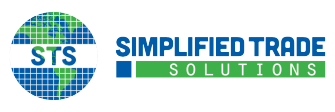Other U.S. government agencies that track relevant shipments in the Automated Export System include
- Bureau of Industry and Security —controlled items
- The Nuclear Regulatory Commission
- State Department — defense items
- Department of the Treasury’s Office of Foreign Assets Control — sanctioned countries and banned parties
- Department of Energy
- Department of Agriculture
Development of AES began in 1995 with the input of exporters, carriers, freight forwarders, port authorities, non-vessel operating common carriers (NVOCC) and software vendors. The first five ports to participate were Baltimore, Norfolk, Charleston, Houston and Los Angeles/Long Beach, which collected export information for vessel shipments. Then in mid-1997, CBP expanded AES to accommodate air and overland commodity data, as well vessel shipments from all ports. AESDirect, a public application supported by the Census Bureau, came on-line in 1999.
Paper documentation for export shipments coexisted with AES until 2008, when the regulations changed to require that all export information be submitted electronically.
